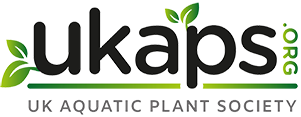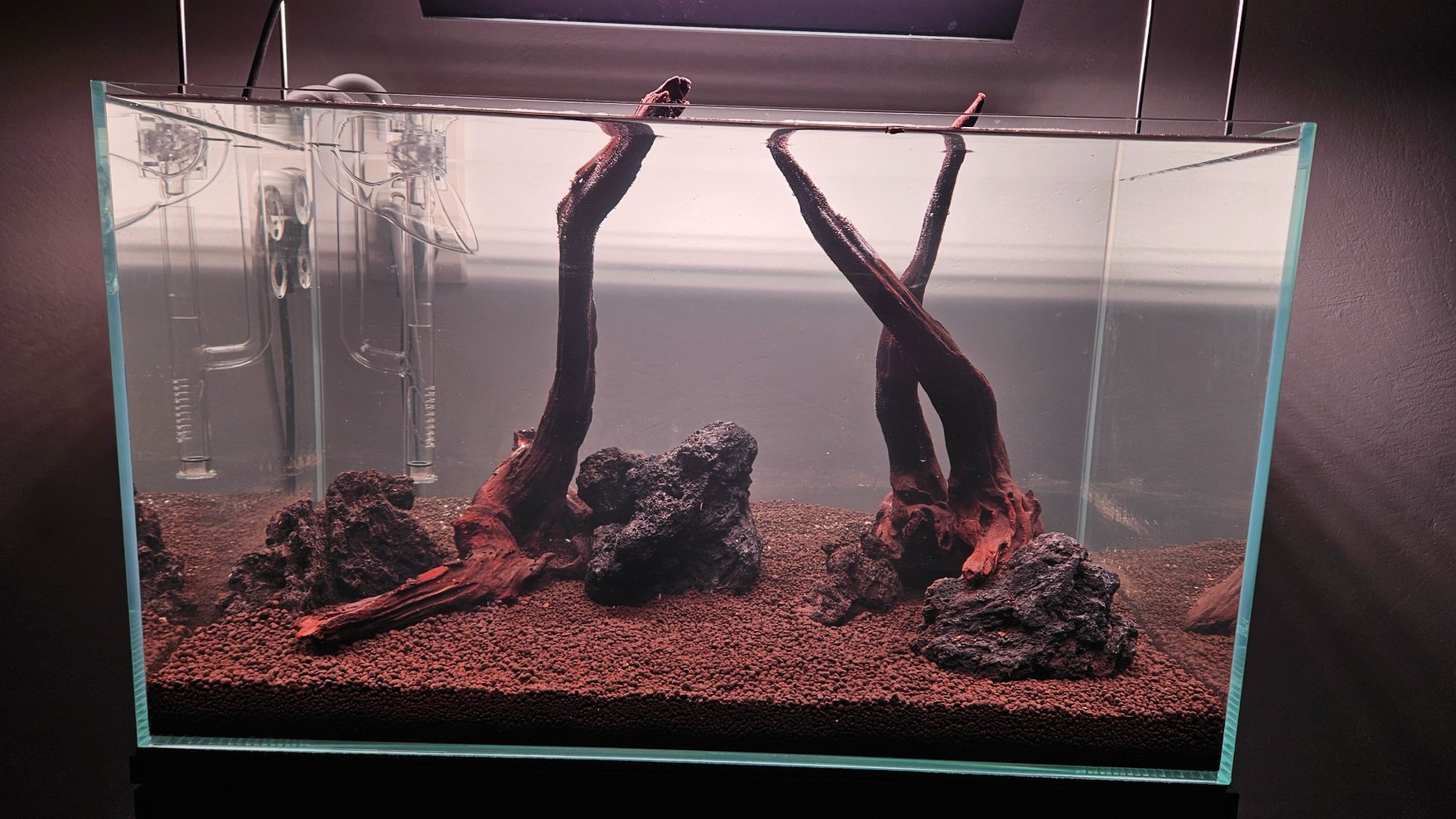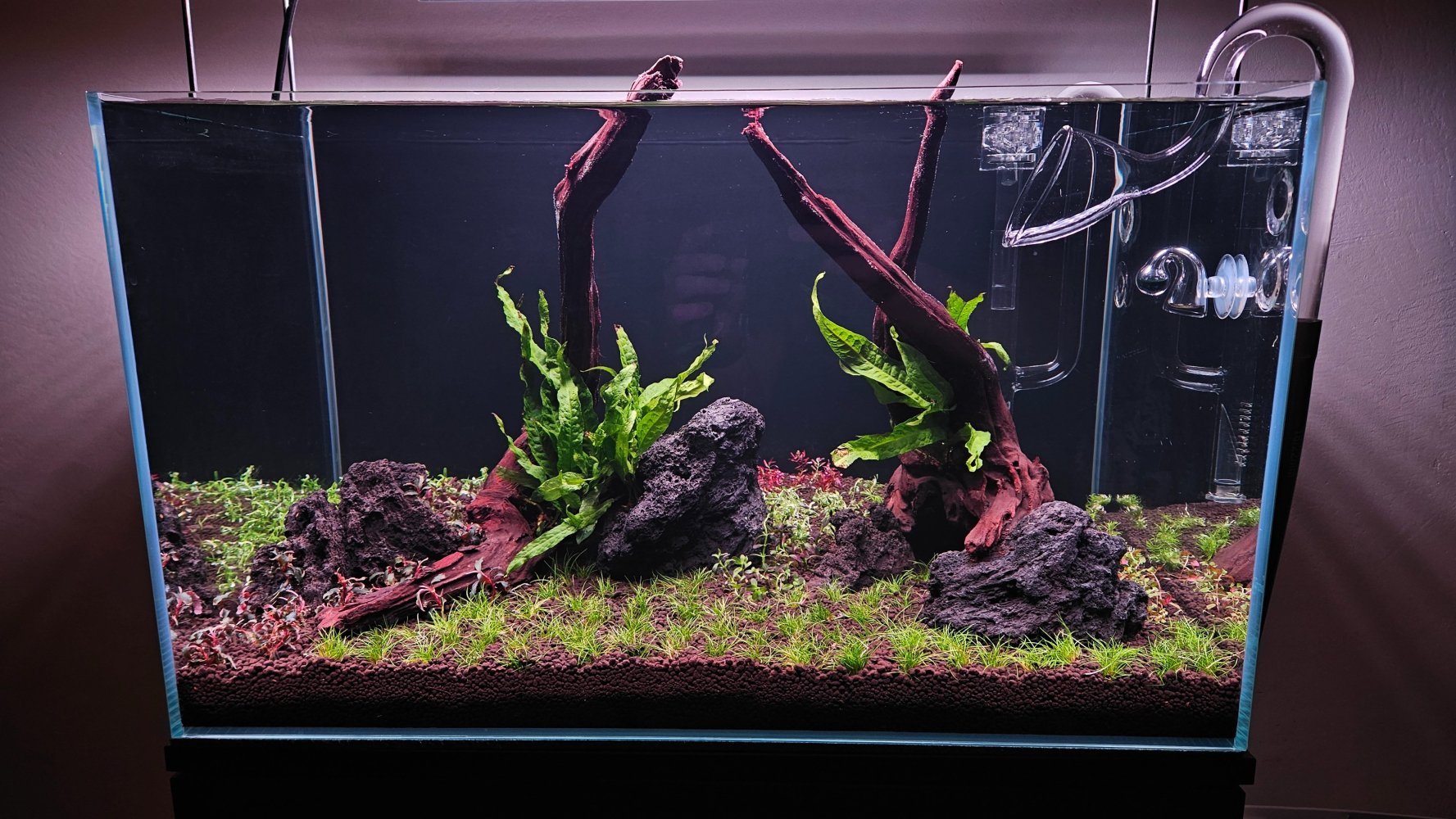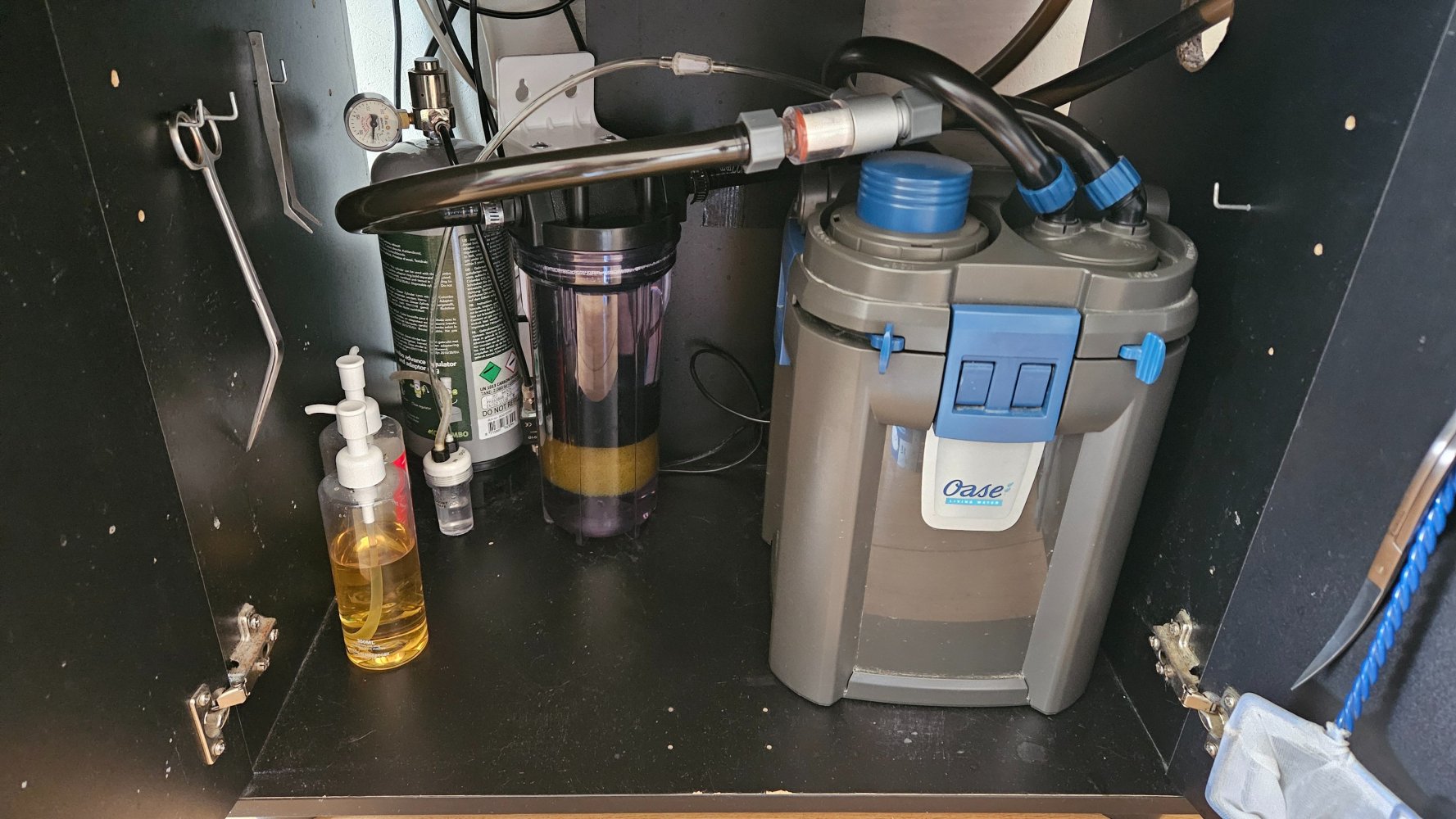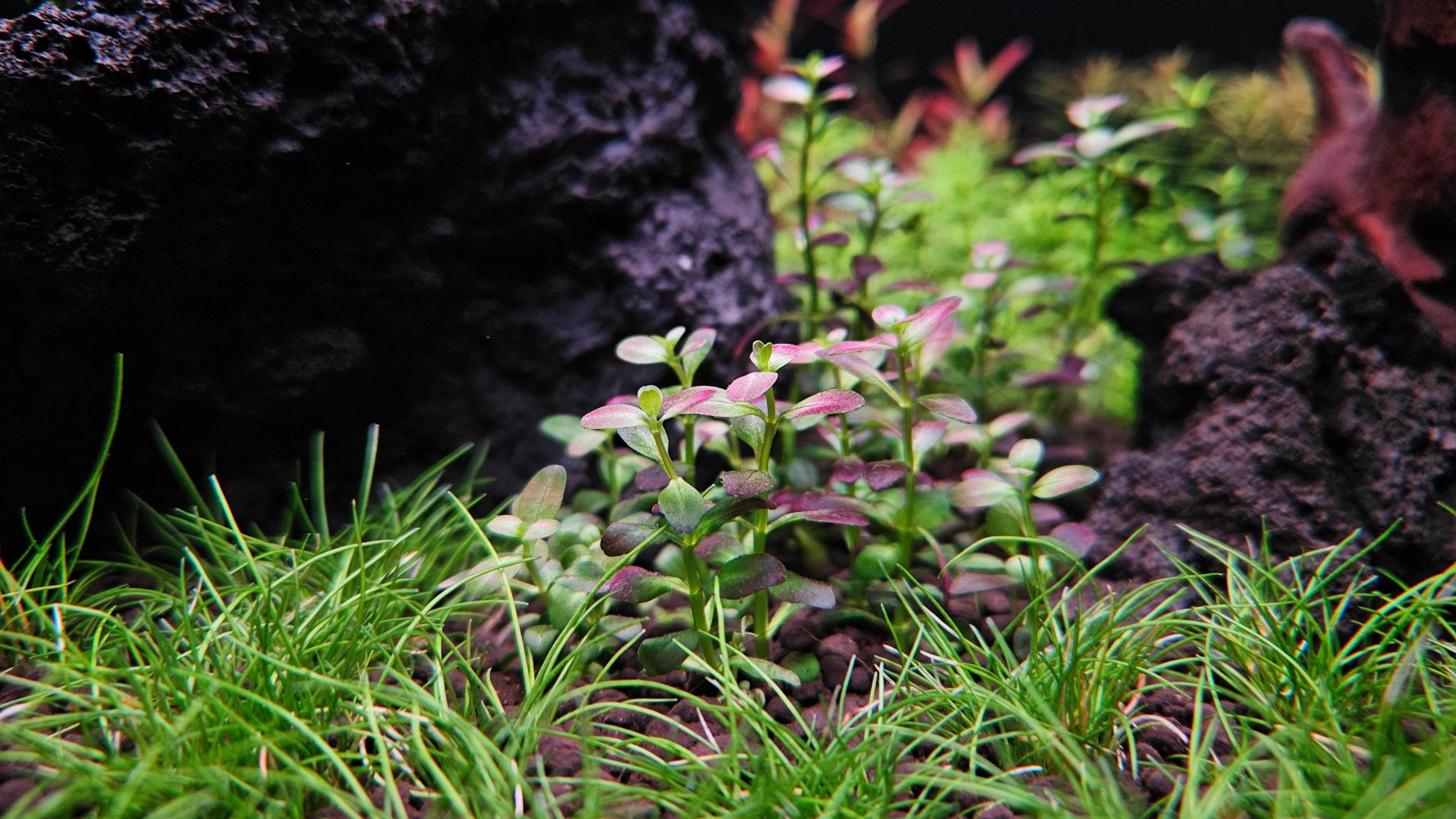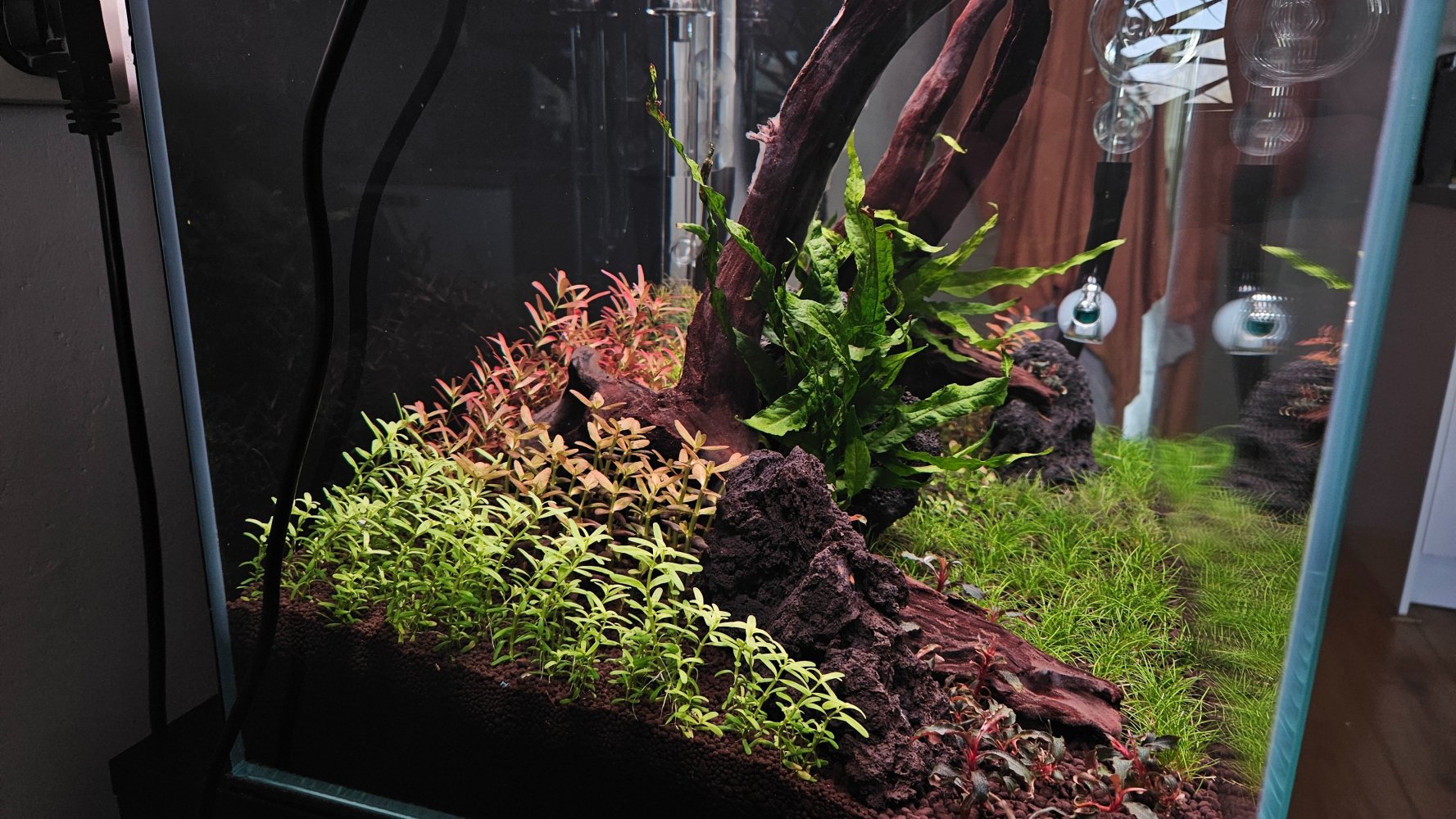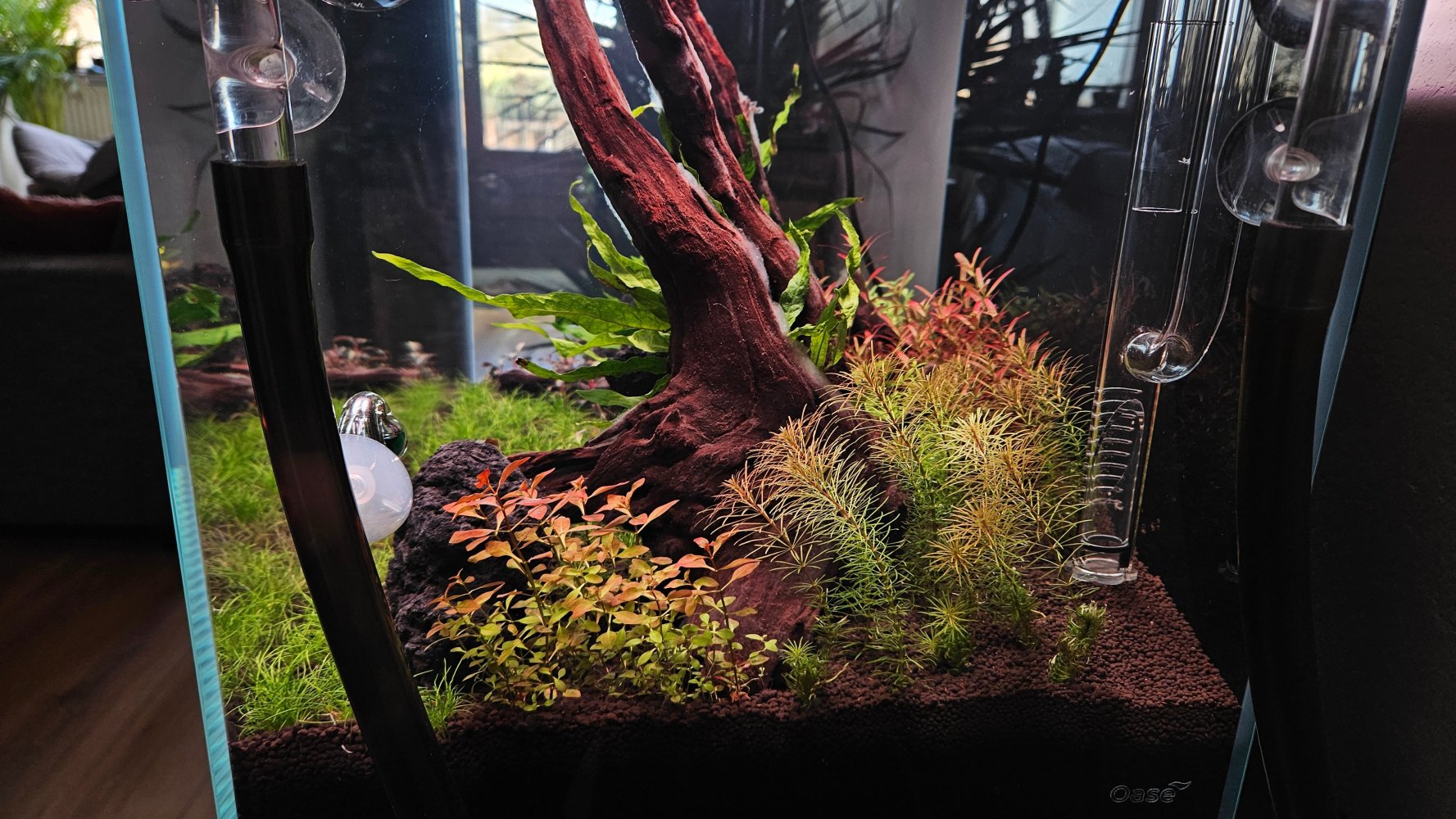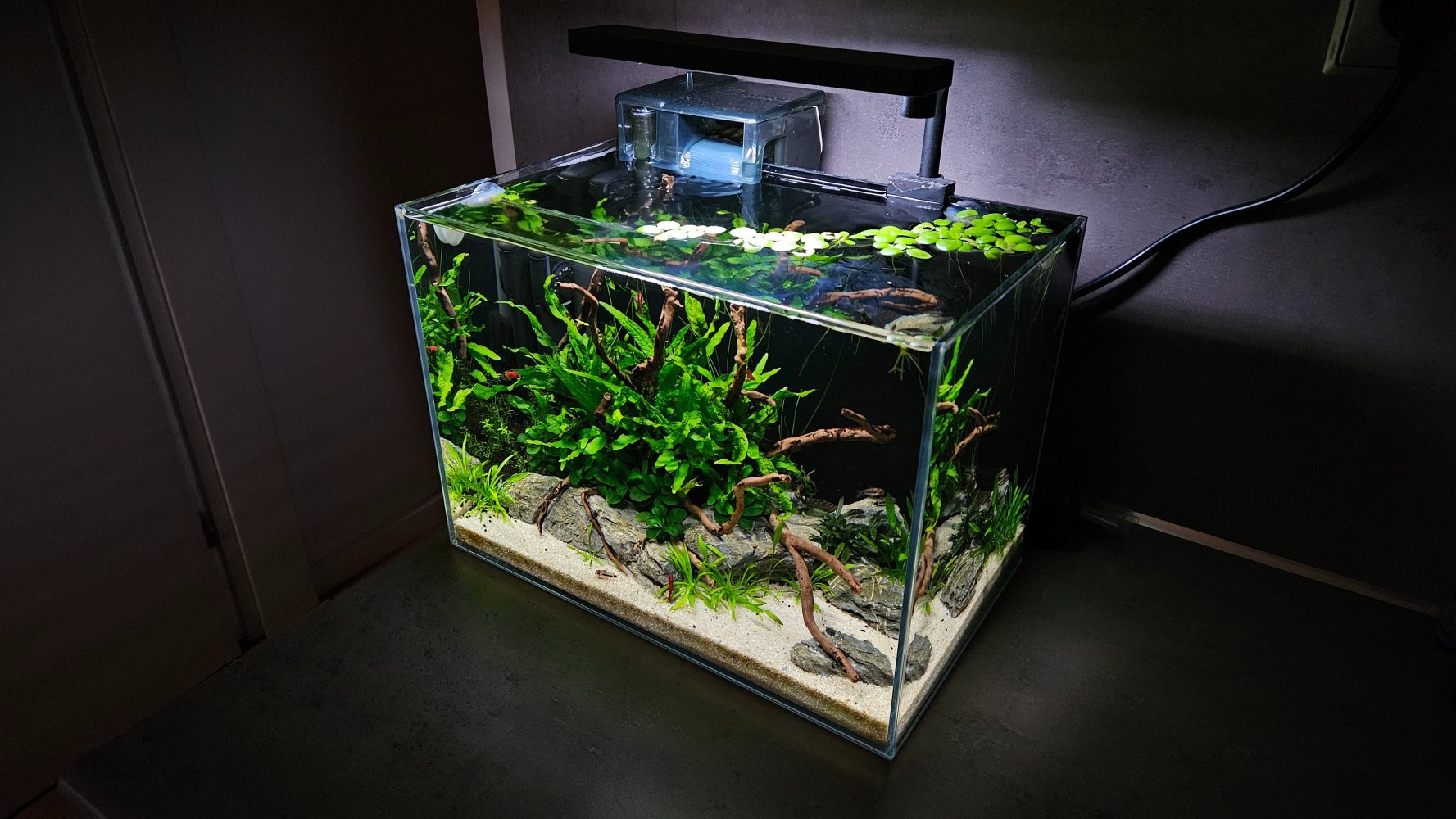Sebebob
New Member
Hi all,
Long time lurker, first time poster. Thanks for having me.
I started a tank about 1,5 weeks back. In, for me, completely new territory. Its a tank where im using only RODI water, remineralized with Apt sky(gh+). I decided to make a journal because I see a lot of conflicting information(or opinions?) about very low ph rodi tanks. And it now happens that this tank measures VERY low ph before co2 injection. Im not even sure if i can trust my ph pen(voltcraft pht-02 atc). It measures ph before co2 injection at 4.9(blue DC) and after 2 hrs of injection at a rate of 3bps(big bubbles) through a cerges style reactor it measures 4.6(almost yellow dc). So, journalling time. FOR SCIENCE!
Equipment used:
Tank decor:
Plant list:
Tank has been dark started for about 4 weeks before adding all the tiny in vitro plants last week.
Long time lurker, first time poster. Thanks for having me.
I started a tank about 1,5 weeks back. In, for me, completely new territory. Its a tank where im using only RODI water, remineralized with Apt sky(gh+). I decided to make a journal because I see a lot of conflicting information(or opinions?) about very low ph rodi tanks. And it now happens that this tank measures VERY low ph before co2 injection. Im not even sure if i can trust my ph pen(voltcraft pht-02 atc). It measures ph before co2 injection at 4.9(blue DC) and after 2 hrs of injection at a rate of 3bps(big bubbles) through a cerges style reactor it measures 4.6(almost yellow dc). So, journalling time. FOR SCIENCE!
Equipment used:
- Oase scaperline 60(60x35x35) 75L,
- Chihiros WRGB2 45,
- Oase Biomaster 250T,
- Nameless Co2 regulator,
- Throwaway bottles(gonna change to refillable next time bottle is empty),
- Cerges style reactor fed co2 through inline diffuser
- Glass lily pipes, skimmer filter inlet.
Tank decor:
- Black lava rock,
- Dark mangrove wood,
- Ada amazonia.
Plant list:
- Eleocharis mini,
- Bucephelandra kedagang,
- Rotala green
- Rotala blood red SG,
- Bacopa salzmanii purple,
- Myriophyllum guyana,
- Hemianthus glomeratus,
- Rotala sp. vietnam,
- Rotala ramosior florida,
- Ludwigia palustris super red
- Microsorum pteropus mini.
Tank has been dark started for about 4 weeks before adding all the tiny in vitro plants last week.
Attachments
Last edited:
